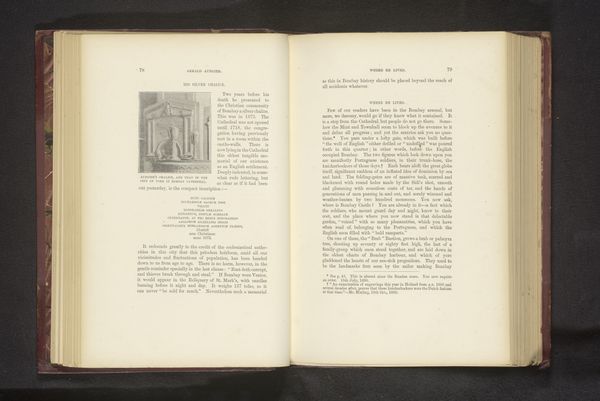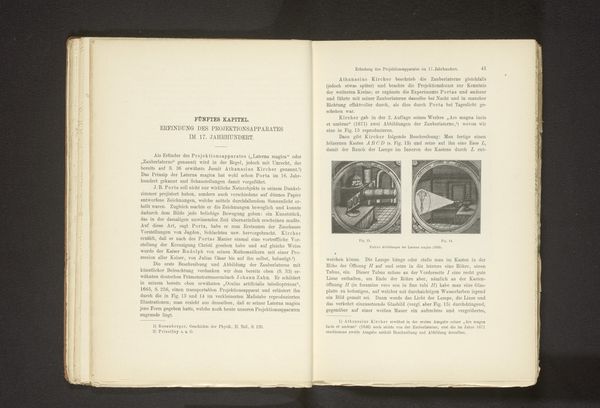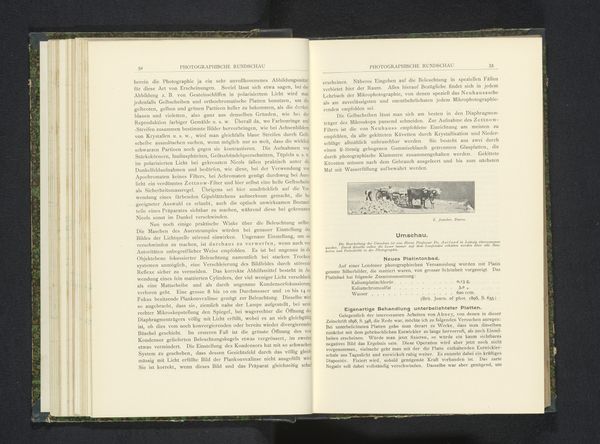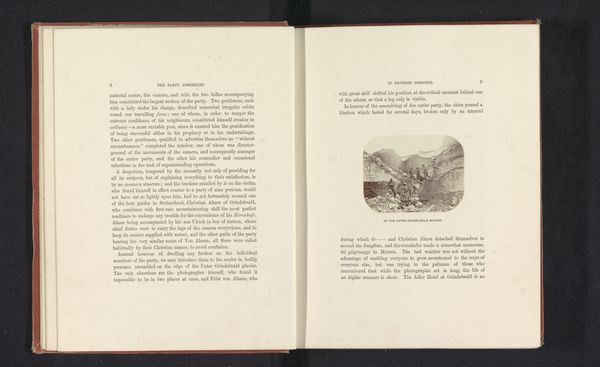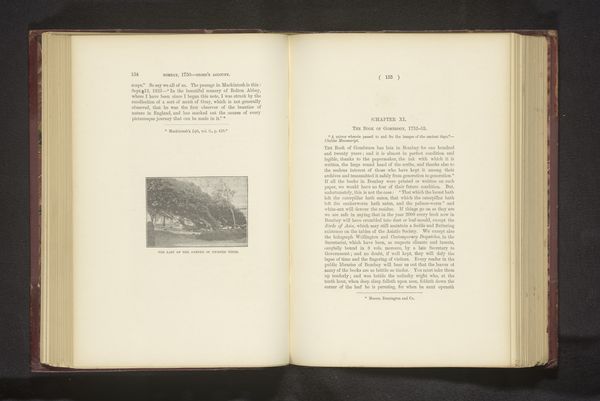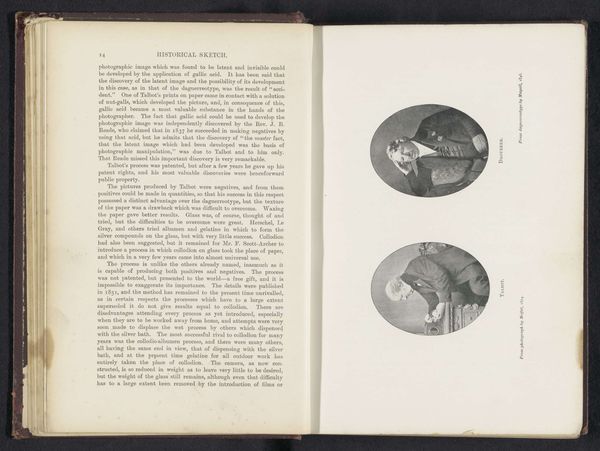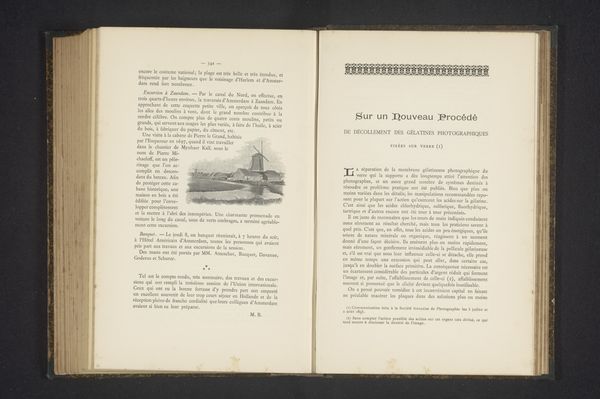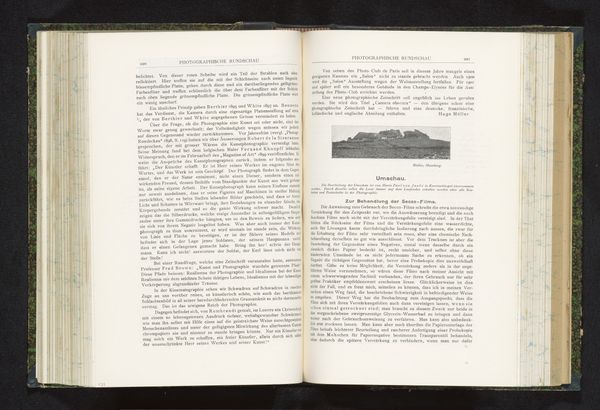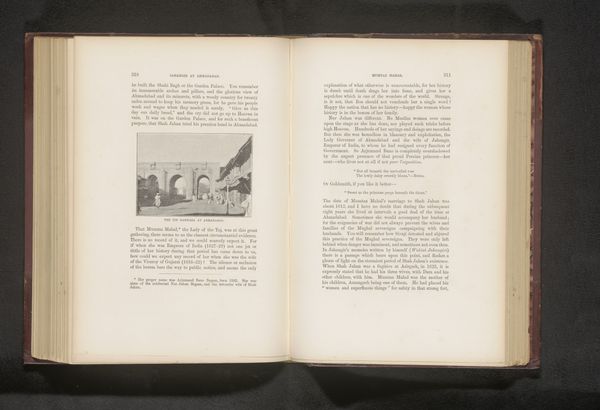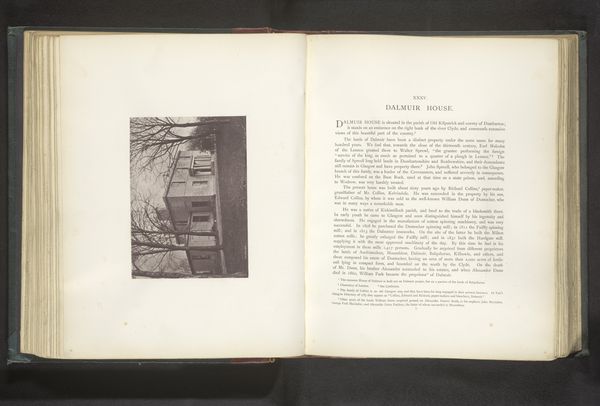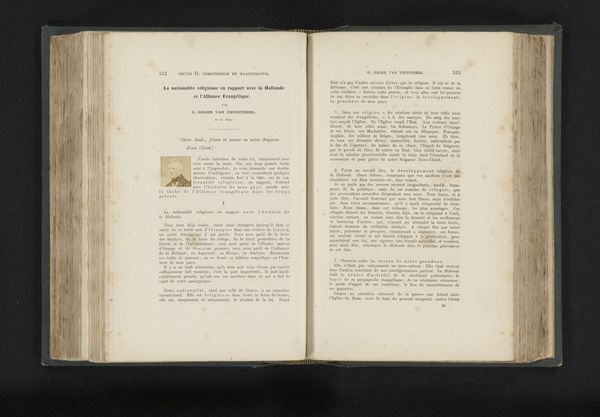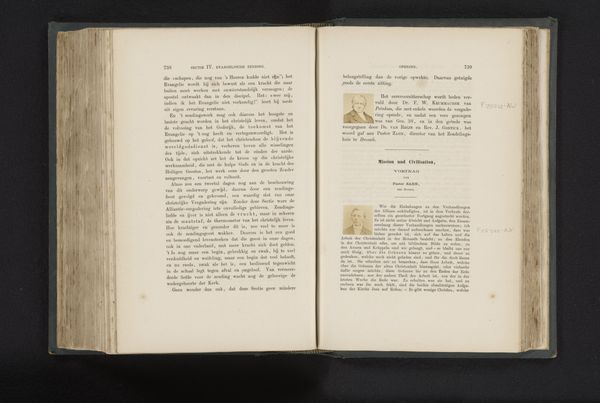
print, engraving
# print
#
book
#
engraving
Dimensions: height 55 mm, width 82 mm
Copyright: Rijks Museum: Open Domain
Curator: This engraving, found within an open book, depicts “The great gun of Bijapur.” It resides in the Rijksmuseum's collection, though its creator remains anonymous. It predates 1893. Editor: My first impression is one of quiet contemplation of brute force, of both great creative, technical processes and sheer destructive power, all rendered in the silent, still medium of the engraving. Curator: A fascinating paradox, indeed! The book itself speaks to the power of disseminating knowledge, making advancements like these transportable in a way the gun itself can never be. But what about the gun as an icon of power, empire, or perhaps something else? Editor: Certainly, there’s that imposing cylindrical form, practically daring you to deny its dominance. However, consider the name "Bijapur." That connects us to the Deccan Plateau in India, and that region's long, storied past of kingdoms rising and falling. The gun represents a certain moment of power but also, inevitably, a transient claim on the landscape. I wonder, in its own time, was this gun an expression of resistance or pure conquest? Curator: The means by which this resistance or conquest came about also offers a vital narrative layer, especially the sheer human ingenuity involved in creating such a thing so many years ago, thinking about its manufacturing and logistical support is crucial, but also the type of scientific knowledge that informs that production. Was its production driven by local means, or by technological transfer from other places, potentially even colonizers? Editor: That speaks directly to the symbolism embedded within the image – of craftsmanship, innovation, and global exchange but that enormous bore and potential energy also stands for the anxieties of violence and domination, speaking volumes about technological and societal implications in general. And in seeing it reproduced through print, those issues of access to science come forward also! Curator: So very true! Thinking of it, this print becomes its own kind of cultural artifact, a flattened representation speaking both to the power and fragility of that very power itself through labor, ink and production methods. Editor: And the quiet hum of cultural memory, preserved in ink, still whispering about battles long past and power gained, then lost. Curator: Exactly – making one consider if any display of raw industrial manufacturing potential remains at its zenith. Editor: An inquiry well worth keeping in mind.
Comments
No comments
Be the first to comment and join the conversation on the ultimate creative platform.

